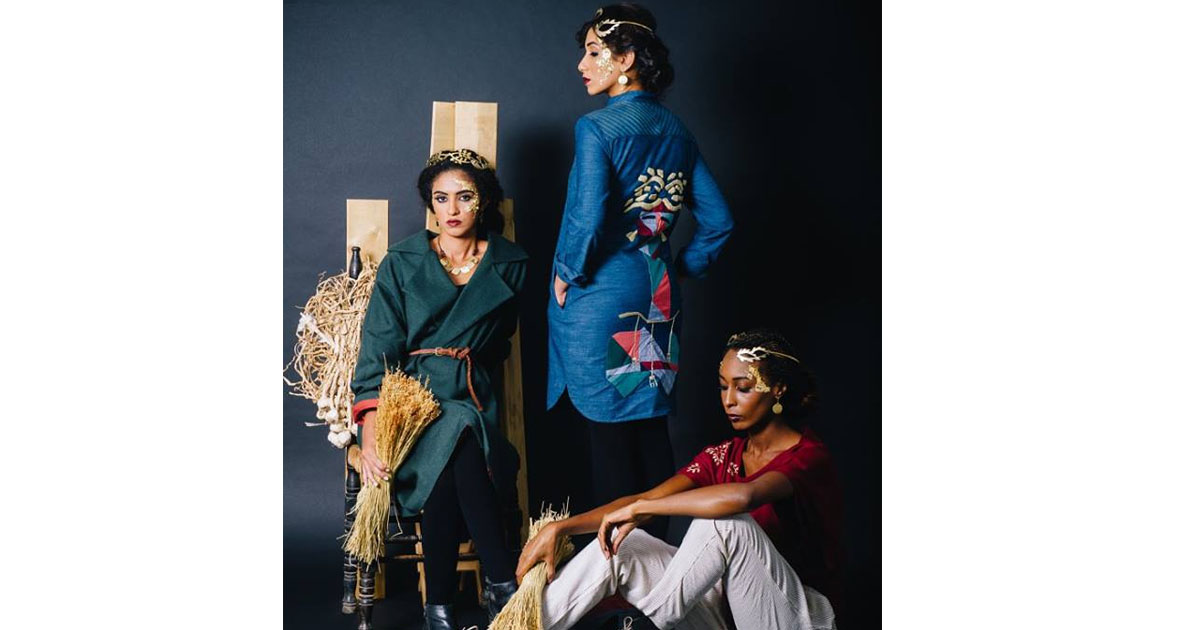After learning about the existence of the reputable Fashion Design Institute right here in Egypt, we met the by-product brand that was the result of hard work and dedication at the institute. The Egyptian brand Allaga and part of the talented team of Designers behind it, Asmaa, Radwa, Doaa and Dalia, sat with us to discuss the founding process, the design process and how you too, can become a part of that.
How did you guys come to the idea of creating Allaga?
Asmaa: Allaga was a product of the Fashion Design Institute. It’s funded by the Ministry of Industry and Trade, and it aims to support young designers and teach the students how to design and execute their own designs. It’s been around since 2001. Allaga is an initiative between the Institute and Germany; GPP: Global Project Partners. The German-Arab Chamber of Commerce expressed their interest in supporting Egyptian young designers and the Egyptian craft. The crafts were to be later exhibited at the Berlin Bazaar.
We started a process where we eliminated designers who didn’t show commitment and dedication and include new ones instead.
How do you select the Designers who will be participating in the crafts-making process?
Asmaa: Students would send in a portfolio of their work and sketches, and after each level, an elimination stage takes place until we have a team.
Radwa: At first, there were so many brands until we thought “why not make a collective brand? This will also help us to implement the idea of team work in Egypt”.
Asmaa: Last season, we started a process where we eliminated designers who didn’t show commitment and dedication and include new ones instead. The applicants do not have to be students of the Institute.
How has the participation been? Has the student turnout been satisfying?
Asmaa: Yes it has. We have plenty of students from different backgrounds, fields and even nationalities.
The name was put on the table as a result of the different backgrounds from the Institute and at the brand itself.
How do you manage to keep the theme or identity consistent with so many different hands working together?
Doaa: The first year we tried that; the exhibition didn’t accept the idea. Designers produced work that was different from their colleagues’; they all had the ethnic part in common, but no consistency in design. When Allaga came to be, we were able to maintain a certain structure with designs and there was one single brand to follow rather than multiple contributions.
How did you come up with the name?
Asmaa: The word Allaga actually has two meanings in Arabic. It’s colloquial for chic and it is also the name of the fabric used to make the traditional kaftan or “Sedery Falahi”.
Radwa: The name was put on the table as a result of the different backgrounds from the Institute and at the brand itself.
Where are Allaga products sold?
Asmaa: Right now they’re being sold at Zafir in Zamalek, Kaf Fatima in Maadi and during the winter at the Exhibition in Germany.
Your prices are within a range of 250-800 Egyptian Pounds. Does your target market accept the pricing or are you facing difficulties?
Radwa: sometimes, we have to explain to the clients that the reason some items are more expensive is because the fabric is hand-woven, embroidery made exclusively in Sinai and all other aspects of the piece are handmade in Egypt.
What inspires your collections?
Radwa: We focus on different governorates and aspects of Egyptian heritage each time. Sometimes we use movies, sometimes locations, and several others. The research team creates a list of suggestions and decides together.
With your expertise, what advice would you give an aspiring young Designer?
Asmaa: Never think you can stop learning. I still learn something new on a daily basis from students, younger colleagues and even the office staff.
Radwa: Never look down on anyone. You never know what necessary piece of information that person might bring to your attention. Don’t let your ego get in the way of your development.
Doaa: It’s extremely important to study your target market thoroughly. When we first went to Germany, we didn’t know they had such a different taste in color and ended up not selling much.
Dalia: There should always be a message the designer tries to convey; and the brand should work accordingly rather than just be a brand that sells fashionable items.

